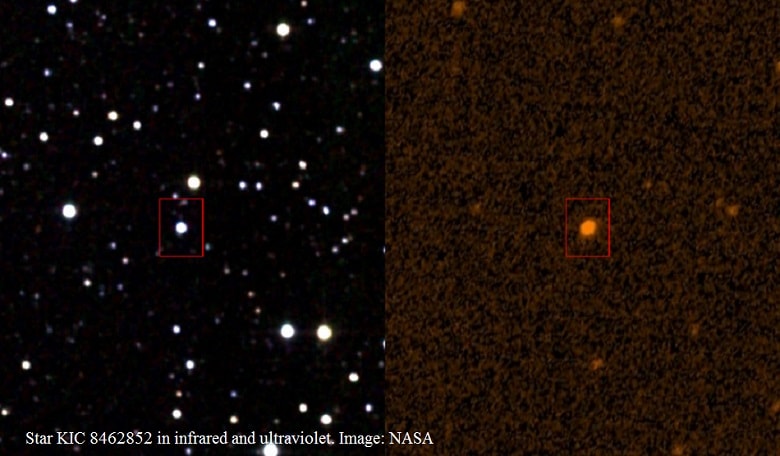A dramatically dimming star in Cygnus is giving astronomers a bit of a headache.
Amateur astronomers working at the Planet Hunters project that scans Kepler space telescope data discovered that the star, whose official name is KIC 8462852 (the unofficial one is the more prosaic WTF star, with the WTF standing for both “Where’s the Flux” – as well as another expression we all know and love), exhibits highly unusual light fluctuations.
These fluctuations are so bizarre that a theory of an “alien megastructure” orbiting the star has even been proposed.
Of course, the likeliest explanation is more mundane. It could be that the age of KIC 8462852 has been miscalculated – and if it is younger than we think, a planet-forming disk could be blocking our view of the star.
An even more mundane explanation is that there is a whole lot of dust and/or gas in the star’s vicinity – though that hypothesis by itself is also quite interesting to explore. As Jason Wright of Pennsylvania State University told Space.com, the dust could be generated by all sorts of interesting objects – be they exocomets or a giant ring system a la Saturn.
Nevertheless, the SETI Institute is now using the Allen Telescope Array to look for possible radio emissions in the star’s immediate neighbourhood.
And SETI are not the only ones now closely watching the star. Various astronomers are now waiting for the next dimming event, should it come any time soon. By analysing how the starlight is then filtered, we could find out much more about KIC 8462852.
Of course, it helps to remember that KIC 8462852 is also 1,500 light years away from us. This means that whatever dramatic events are possibly happening in its vicinity – whether they involve an “alien megastructure or not” – we are finding out about them with quite a bit of a delay.











